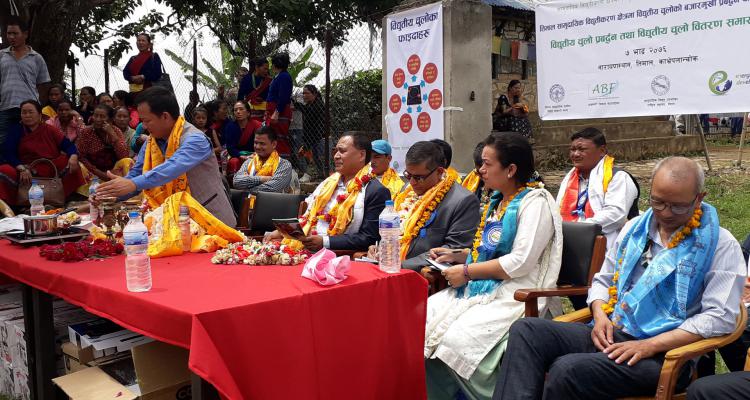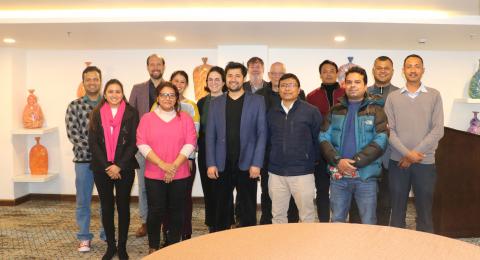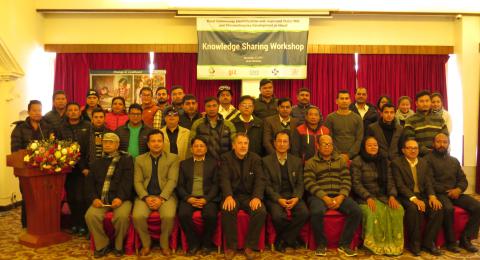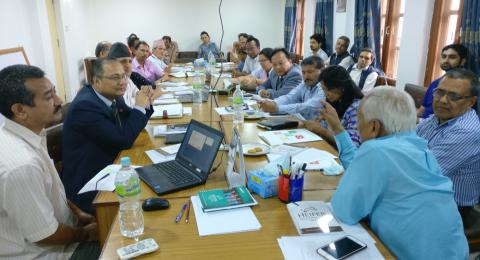
Under the EnDev supported pilot project for promotion of electric cooking in Teemal Rural Municipality, Nepal Electricity Authority executive director Kulman Ghising kicked off the distribution of the electric induction cooktop distribution program in Teemal, Kavre. Mr. Ghising inaugurated the event by handing over electric induction cooktops to an individual belonging to each ward of the rural municipality. Along with electric induction cooktops the handover package included a pressure cooker, saucepan and a frying pan which are compatible with the cooktop. During the distribution event Mr. Ghising remarked on the current status of the electricity sector in Nepal by saying “Nepal is transitioning into energy independence and this campaign of electric cooktop promotion will aid in this process…..” and further added “For clean environment and good health electric cooktops will play an important role & if every individual is healthy then only the dream of prosperous Nepal is realized.”
Nepal’s electricity is mainly generated through hydropower projects from the (mostly run of the river type) rivers running off from the mountains; utilization of this energy is vital to cut off trade deficits resulting from fossil fuel imports from neighboring countries and to be energy independent. Nepal has had its fair share of energy crisis in not so distant memory from “load shedding” to economic blockade of 2015. Due to these circumstances people have a positive outlook and are aware of the benefits of electric cooking in the cities but in the rural context this technology is still nascent. Hence, EnDev in cooperation with Ajummery Bikash Foundation and National Association of Community Electricity User Nepal implemented a pilot project for promotion of electric cooking in Teemal, Kavre. The main objective of the project are to assess the effectiveness of the community rural electricity entities in demand creation for electric cooktops, assessment of the impact of increased use of electricity on the existing transmission and distribution system and also to assess the social acceptance and behavior change of households for sustained/correct use.






